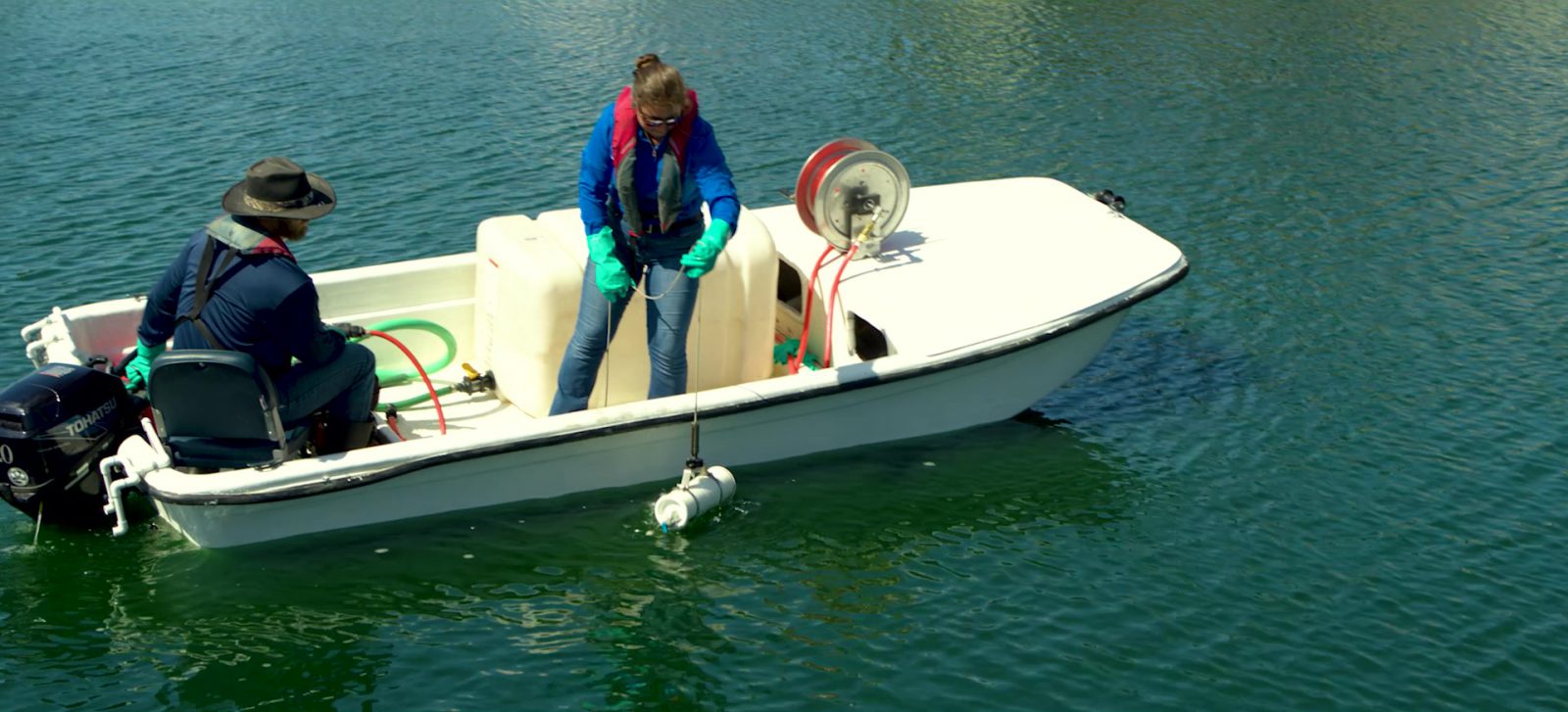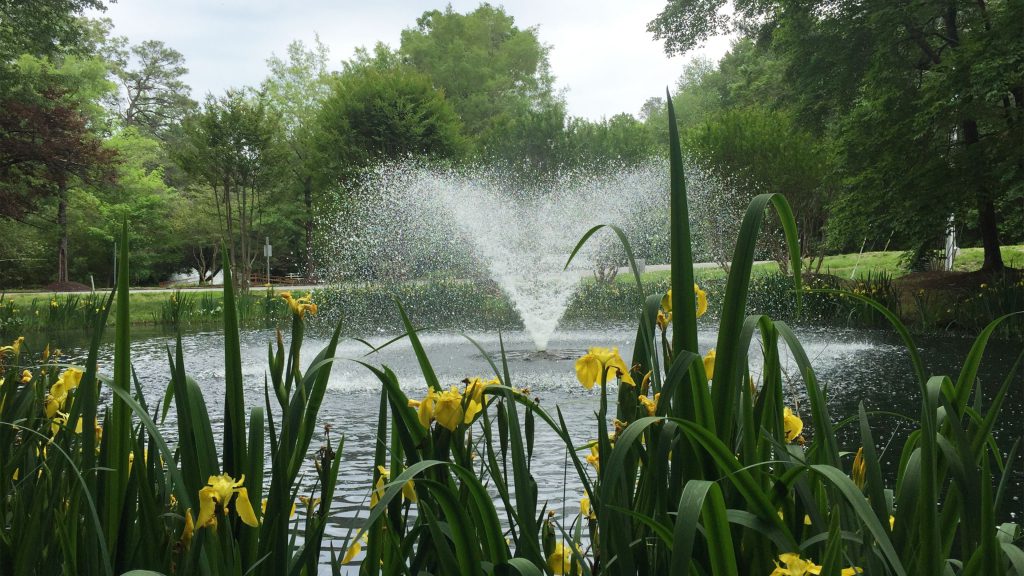
Back to Basics: Consider the Rule of Three to Restore Balance
When developing a management plan for a lake or pond, it is important to keep its purpose and priorities in mind. Is it strictly aesthetic? Is it used for fishing or recreation? Maybe it facilitates irrigation, drinking water, fire suppression or stormwater collection? An effective freshwater management program can be compared to the importance of each leg on a “three-legged stool.” Just like the legs supporting the stool, many water resources are interdependent, meaning that the actions taken in the watershed could cause imbalances that have negative consequences downstream.
Think of each “leg” of this metaphorical three-legged stool as representative of the (1) physical, (2) chemical, and (3) biological components of a freshwater resource. If one part of this trinity breaks down, the others will follow. To ensure each of these aspects is protected, it’s important to understand the ways in which they contribute to the health of a waterbody and how to identify imbalances when they arise.
1) The Physical Characteristics of Your Waterbody
The first leg of the stool—the physical characteristics of a lake or pond—includes features such as size, depth, volume, bottom substrate, water source and exchange through the system. These are major components that can affect how a lake or pond responds to environmental conditions. For instance, shallow ponds with excessive build up of bottom muck and sediment, or those with limited water movement, will be more likely to experience algae and weed growth than a large, deep lake or one with lots of movement.
2) The Chemical Characteristics of Your Water
The chemical characteristics, the second leg of the stool, refer to natural water quality components that can be measured, such as temperature, dissolved oxygen, pH, nutrients, water clarity, dissolved metals, salts and many other parameters. Poor water quality in lakes and ponds often occurs when these parameters become imbalanced in one direction or another. This is often caused by polluted runoff entering the waterbody that contains fertilizer, pet or wildlife waste, landscaping debris (grass clipping and leaves) and other organic materials. This process of nutrient “pollution” is one of the most common causes of chemical imbalance in a freshwater ecosystem.
3) The Biological Components of Your Lake
The third biological component of the stool comprises all living things, including algae, plants, bugs, fish and microorganisms. Nutrient pollution is an example of how one component can directly affect another; nutrients encourage algae and aquatic plant growth. While moderate levels of growth are natural and provide habitat and food for fish and wildlife, algae and aquatic weed growth can proliferate under imbalanced conditions.
Without proper management, nuisance algae and vegetation can block sunlight, limit access for fishing and boating, and compromise aesthetics. As these increased populations of plants and algae decay as part of their natural lifecycle, they will release more nutrients into the waterbody to fuel additional growth, creating a vicious cycle. In the process, the risk of fish kills, offensive odors, accumulation of bottom muck and nuisance insect populations can all increase—further offsetting the balance of the waterbody’s physical, chemical and biological characteristics.
Proactive Management: The Key to A Balanced Waterbody
Having knowledge about the benefits of proactive management, and sustainable tools and technologies at our fingertips, adds a fourth, stabilizing “leg” to the “three-legged stool.” With a proactive management in place—even if one of the other components is slightly out of balance—the stool may wobble but will not fall over. In other words, problems that might normally be detrimental for a lake or pond can be identified and resolved early on, before they can impact other aspects of the ecosystem.
Proactive Solutions to Manage Nutrient Levels
A proactive approach is most effective when it accounts for all elements of an ecosystem. Vegetative buffer management, shoreline stabilization, aeration, regular stormwater inspections, and even sediment removal are all proactive ways to support the physical leg of the stool. These tools limit the influx of runoff and pollutants, prevent erosion and sedimentation, increase water movement and maintain the depth and structural components of a lake or pond.
Some of the more advanced management strategies utilize nutrient-locking products or beneficial bacteria to cycle and remove excess nutrients from the water column, reducing the potential for chemical imbalances. New technologies like nanobubble treatments can be used alongside these solutions to increase beneficial dissolved oxygen concentrations and enhance overall water quality. Aeration of all types can also help foster the health of fish, wildlife and beneficial insects through the biological food chain. These proactive tools can help give more “stability” to a freshwater management plan so serious, costly problems are far less likely to arise.
Maintain Balanced, Beautiful Water with Proactive Management
Whether mosquitoes and bad odors are keeping you away from the water or nuisance algae is causing an eyesore around your property, there are always ways to counteract the issues you are experiencing. It is important to bring in a professional to educate you about the best proactive approaches for your waterbody and help design a custom management plan before problems get out of hand. Just like a master carpenter would use his knowledge and expertise to build you the best seat, a certified and trained lake management professional will take each “leg” of the aquatic resource into account to achieve your unique goals and objectives.
Contact Us to Build A Proactive Management Plan
Call us at 888-480-5253 or complete the form below to connect with an aquatic management expert.
SOLitude Lake Management is a nationwide environmental firm committed to providing sustainable solutions that improve water quality, enhance beauty and preserve natural resources.
SOLitude’s team of aquatic scientists specializes in the development and execution of customized lake, stormwater pond, wetland and fisheries management programs. Services include water quality testing and restoration, algae and aquatic weed control, installation and maintenance of fountains and aeration systems, shoreline erosion control, muck and sediment removal and invasive species management. SOLitude partners with homeowners associations, golf courses, private landowners, businesses and municipalities. SOLitude Lake Management is part of Rentokil, a leading business services company, operating across the United States, Canada and Puerto Rico.
For more information, visit SOLitude Lake Management at solitudelakemanagement.com, and connect on Facebook, LinkedIn and Twitter.


















